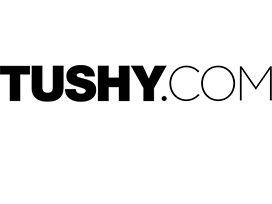
Advertisement
In the highly competitive adult streaming landscape of the United States, viewer loyalty is split across two dominant paradigms: curated premium studios like Tushy and mass-aggregator free sites like Tube8. Each platform offers distinct viewing experiences, shaped by business models, technology infrastructure, and user data policies.
Tushy, as a studio-based premium site, focuses on quality, exclusivity, and performer-centric aesthetics. Conversely, Tube8, a part of the MindGeek conglomerate, represents the tube-style aggregation model where scale, breadth, and algorithmic convenience dominate. For the discerning American viewer in 2025, choosing between them isn’t merely about access—it’s about performance, ethics, and personalization.
Tushy vs Tube8 – Accessibility and User Interface for American Viewers
While both platforms are technically global, their U.S.-based UX strategies differ significantly. Tushy emphasizes minimalist elegance tailored to high-bandwidth premium users, offering fewer friction points for desktop and mobile access. Tube8, however, opts for content density, prioritizing maximum clickability over streamlined browsing.
Tushy’s front-end is designed to mirror luxury streaming services, with cinematic thumbnails, pre-optimized video carousels, and a responsive layout that auto-adjusts to resolution and bandwidth fluctuations. Tube8’s homepage, in contrast, loads over 250 clickable assets on initial load, often overwhelming new users unfamiliar with its clustered taxonomy.
How intuitive is the UI and UX for first-time users?
New users on Tushy encounter a guided premium experience with clearly labelled categories, filters by performer, and precise run-time segmentation. Navigation is linear and elegant. On Tube8, first-time users confront an algorithmically dense grid lacking logical progression. While power-users appreciate Tube8’s raw volume, casual American viewers often abandon sessions mid-scroll due to sensory overload.
Tushy vs Tube8 – Ads, Trackers, and Cookie Policies
Ad strategy is a critical differentiator. Tube8, as a free platform, monetizes traffic via aggressive advertising placements, JavaScript-driven banners, and dynamic retargeting trackers. Tushy, being a subscription-based platform, avoids external ad injection entirely, focusing instead on internal content discovery loops.
In 2025, many USA-based viewers use browser extensions to block Tube8’s persistent pop-ups, but these often break the core site functionality. On the other hand, Tushy’s zero-ad environment not only improves UX but also reduces page latency significantly, especially on mobile networks.
Which site bombards users with pop-ups and scripts?
Tube8 deploys as many as 18 third-party trackers on a single video page, according to public audit tools. These include real-time bidding scripts that degrade load time and privacy. In comparison, Tushy uses internal cookies for account login and personalized content queuing only. For privacy-conscious American viewers, this distinction heavily influences platform preference.
Tushy vs Tube8 – Subscription Models and Cost Transparency
Tushy operates on a clear-cut pricing model. Viewers in the USA can opt for monthly or annual access, with clearly disclosed rates and a transparent cancellation mechanism. In contrast, Tube8 is free to use but monetizes indirectly through data aggregation and affiliate links, particularly redirecting users to premium sister sites.
This distinction often misleads viewers. Many Tube8 visitors are funneled into paid sites under the impression of free access, while Tushy’s front-end never obscures its pricing. In a market where digital subscription fatigue is rising, clarity in cost becomes a competitive edge.
Is paying for content worth it in 2025?
For American viewers prioritizing visual fidelity, lack of ad clutter, and narrative consistency, Tushy offers unmatched value. Its 4K HDR streaming, scene continuity, and performer exclusivity justify the premium. Meanwhile, Tube8’s fragmented uploads, inconsistent resolution, and watermark-heavy videos diminish rewatch value. The “free” model ultimately incurs cost in time, privacy, and experience quality.
Tushy vs Tube8 – Variety, Tags, and Viewer Niches
Tube8 houses tens of thousands of videos across mainstream and niche categories, driven largely by user uploads and scraping engines. Tushy, though smaller in volume, refines its library into highly curated sets emphasizing narrative progression, chemistry, and performer vetting.
U.S. viewers increasingly search via tags rather than browsing categories, and both platforms offer tag-based navigation. However, Tube8 suffers from tag-spamming, where unrelated videos populate keyword results to inflate traffic. Tushy’s tagging system, in contrast, is editorially controlled, yielding higher match precision.
Are USA viewers getting what they’re really searching for?
Search intent satisfaction differs sharply. On Tushy, searching “interracial” or “hotel scene” yields hyper-specific, high-definition content matching both keyword and mood. On Tube8, such searches result in inconsistent quality, irrelevant uploads, and duplicated scenes under varied titles. For American viewers prioritizing accurate discovery, Tushy’s tight tag architecture provides greater satisfaction.
Tushy vs Tube8 – Which Platform Supports Creators Better?
Performer compensation models reveal fundamental ethical divides. Tushy, as a direct production studio, contracts talent under fair-use agreements and pays fixed rates with residual bonuses for top-performing scenes. Tube8, on the other hand, functions primarily as a distributor and aggregator, with most content monetized through ad impressions—not performer royalties.
Even with Tube8’s Modelhub integration, revenue-sharing heavily favors platform owners. In contrast, Tushy’s stable of contracted performers—often cross-featured across sister brands—report consistent, above-industry-standard pay.
Does Tube8’s scale beat Tushy’s polish for performer revenue?
In short: no. While Tube8 reaches more eyeballs, its revenue distribution model dilutes performer earnings. Tushy’s smaller but loyal paying subscriber base translates to a more sustainable income channel for performers. In the U.S. context, where creator equity is an emerging cultural issue, Tushy’s model aligns better with evolving viewer ethics.
Tushy vs Tube8 – Keyword Targeting and SEO Strategy
SEO strategies between both platforms are deeply divergent. Tube8 exploits high-volume, low-difficulty keywords with aggressive indexing. Page URLs often include multiple keywords, and meta descriptions are algorithmically scraped from titles. This tactic ensures Tube8’s dominance in quick-hit search results.
Tushy, however, invests in organic search via clean metadata, exclusive scene names, and performer-led SEO. Their Google snippets are better structured, increasing click-through rate from search even with lower overall volume.
How each site wins organic traffic in adult search
Tube8 wins in brute-force indexing—its domain authority and backlink network saturate adult SERPs. Tushy, though ranking on fewer keywords, achieves higher dwell times and lower bounce rates, improving its overall content equity in Google’s behavioral algorithms. For USA-based searchers using specific scene or performer queries, Tushy surfaces cleaner, more relevant results.
Tushy vs Tube8 – Audience Popularity and Retention in the USA
According to SimilarWeb and Pornhub Insights data (Q1 2025), Tube8 receives over 120 million monthly visits globally, with the USA contributing around 30%. However, retention rates remain low—under 3 minutes per session on average. Tushy, with a significantly smaller user base, boasts a retention time of 8+ minutes per session, and over 50% of U.S. subscribers return weekly.
Reddit threads and Quora discussions among American users echo this split: Tube8 is for quick browsing, while Tushy is for immersive, cinematic experiences. Viewer loyalty patterns confirm that U.S. subscribers who convert to Tushy rarely return to tube-style viewing.
What do Google Trends, Reddit, and Pornhub Insights suggest?
Data indicates that Tube8 spikes in late-night searches and mobile usage, while Tushy peaks during weekends and desktop viewing hours. This behavioral segmentation shows that American viewers see Tushy as a destination, while Tube8 serves immediate gratification. Loyalty patterns lean toward Tushy for viewers over 30, while Tube8 dominates among under-25s.
Tushy vs Tube8 – Cookies, Data Collection and Privacy Concerns
For American users increasingly aware of digital surveillance, privacy policies matter. Tube8, due to its advertising partnerships, collects user data including device fingerprinting, IP addresses, and session behavior for resale. Tushy, being subscription-driven, collects minimal user data confined to billing and content preference tracking.
Tube8’s privacy policy, while publicly accessible, allows for broad data sharing with undisclosed “partners.” Tushy’s policy restricts data use strictly to service improvement.
Are American viewers tracked more on Tube8?
Yes. Tube8’s reliance on adtech exposes U.S. users to cookies from over 12 external domains per session. Even incognito mode doesn’t prevent tracking due to JavaScript beacons. Tushy, meanwhile, avoids external trackers entirely, making it a safer platform for privacy-conscious viewers, especially in states with strong data laws like California.

Tushy vs Tube8 – Suggestions, Recommendations, and AI Curation
Both platforms leverage recommendation engines, but with different intentions. Tube8 relies on past viewing history and click-through rates to populate endless scroll feeds. Tushy, in contrast, uses AI-powered behavioral modeling to suggest scenes based on style, lighting, actor chemistry, and thematic preference.
This leads to fundamentally different viewing journeys. Tube8’s suggestions are reactive, often redundant. Tushy’s are curated to enhance session depth, encouraging binge-style viewing over scattershot consumption.
Which platform feels more personalised for USA users?
Tushy delivers high-level personalization based on fewer but deeper user signals. Its AI models prioritize cinematic preference over click quantity. Tube8, while faster at populating suggestions, often repeats content or misaligns with user intent. For U.S. viewers expecting Netflix-grade intelligence in 2025, Tushy performs closer to expectations.
Tushy vs Tube8 – Verdict: Which Platform Wins for the Modern American Viewer?
Evaluating the platforms strictly on experience quality, ethical grounding, user privacy, and search precision, Tushy emerges as the preferred choice for American viewers seeking consistency, discretion, and content excellence. Tube8 remains a useful platform for spontaneous, varied exploration, especially among younger or less privacy-concerned audiences.
A data-driven conclusion with no fluff
For U.S. viewers in 2025, platform preference is dictated by intent. Casual, quick-access viewers may still lean toward Tube8, but data consistently shows that once exposed to Tushy’s high-resolution, ad-free, AI-personalized experience, users convert and rarely churn. The average retention duration and repeat subscription rate of Tushy validate its edge over Tube8’s scattershot volume.

Tushy vs Tube8 – The Hidden Angle: How Your Internet Speed Affects Perception of Porn Quality
While often overlooked, broadband speed plays a critical role in platform perception—especially in geographically diverse regions of the United States. Tushy’s 4K streams require stable, high-throughput connections, making it naturally better-suited for urban centers with fiber or 5G. Tube8’s lower-resolution content, being lighter, loads faster even in bandwidth-limited rural zones.
A surprising variable that influences USA users’ loyalty
In states like Montana, Mississippi, or West Virginia—where average download speeds hover below 25 Mbps—Tube8 outperforms in sheer loading speed. Users in these regions report frustration with buffering and quality drops on Tushy, despite its superior content. Conversely, urban users in cities like New York, Seattle, or Austin experience Tushy as seamless and premium.
This overlooked variable—internet infrastructure—often determines long-term loyalty. As America’s digital divide narrows with continued fiber expansion, Tushy is expected to capture more of Tube8’s base simply by delivering consistent quality as technical limitations dissolve.
Final Analysis: For the modern American adult viewer with access to high-speed internet and elevated content expectations, Tushy decisively outshines Tube8. Yet, for fast access, niche diversity, and lightweight streaming, Tube8 maintains its foothold. Internet speed, privacy preferences, and ethical priorities now shape pornographic platform loyalty more than raw content volume ever could.
(Business Upturn does not promote or advertise the respective company/entity through this article nor does Business Upturn guarantee the accuracy of information in this article)
